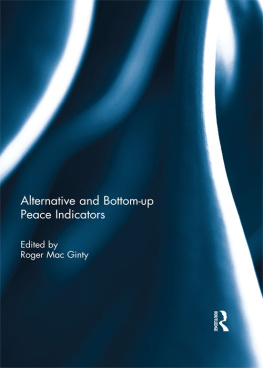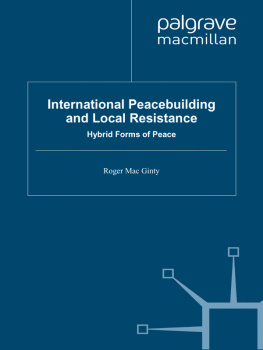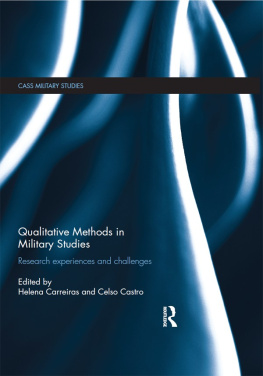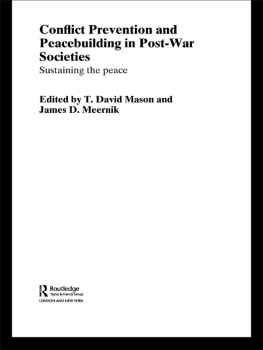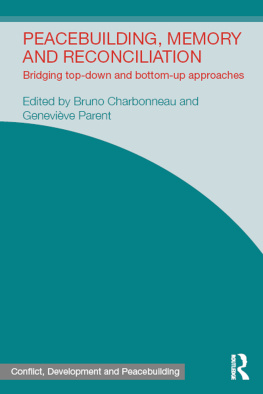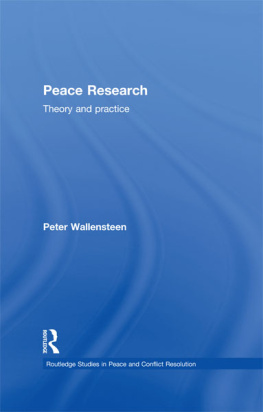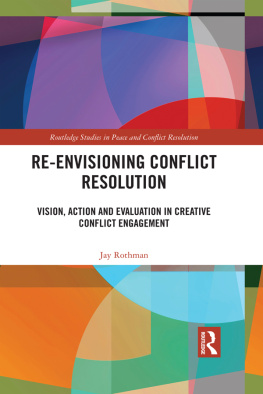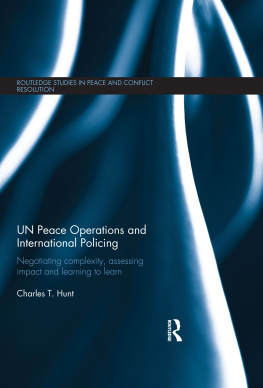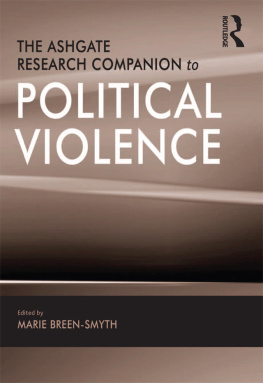Alternative and Bottom-up
Peace Indicators
There is widespread dissatisfaction with the current suite of evaluation and monitoring tools available to peacebuilders and those responding to conflict. Yet, despite this dissatisfaction, there are few concrete moves to investigate alternative methods of gauging the success or failure of peace initiatives. This volume explores alternative methods of assessing peace. These methods tend to be bottom-up and people-centric and are interested in many aspects of conflict societies that orthodox top-down indicators often miss. The methods explored in this work chime with the contemporary interest in critical approaches to peace and conflict studies, and approaches that are interested in local perspectives. The volume also connects with a growing interest in civic epistemology, or the co-production of data whereby research subjects participate in the research and have a chance of understanding the relevance of research. All of the contributors to the volume have significant field experience in conflict-affected areas and their work is informed by an engagement with the everyday challenges and opportunities facing people in war zones.
This book was originally published as a special issue of the Journal of Intervention and Statebuilding.
Roger Mac Ginty is Professor of Peace and Conflict Studies at the Humanitarian and Conflict Response Institute, and the Department of Politics, University of Manchester. He edits the journal Peacebuilding. His latest books are International Peacebuilding and Local Resistance (2012), and the edited volumes Sage Major Work on Peacebuilding (2014) and Routledge Handbook on Peacebuilding (2013).
Alternative and Bottom-up
Peace Indicators
Edited by
Roger Mac Ginty
First published 2015
by Routledge
2 Park Square, Milton Park, Abingdon, Oxon, OX14 4RN, UK
and by Routledge
711 Third Avenue, New York, NY 10017, USA
Routledge is an imprint of the Taylor & Francis Group, an informa business
2015 Taylor & Francis
All rights reserved. No part of this book may be reprinted or reproduced or utilised in any form or by any electronic, mechanical, or other means, now known or hereafter invented, including photocopying and recording, or in any information storage or retrieval system, without permission in writing from the publishers.
Trademark notice: Product or corporate names may be trademarks or registered trademarks, and are used only for identification and explanation without intent to infringe.
British Library Cataloguing in Publication Data
A catalogue record for this book is available from the British Library
ISBN 13: 978-1-138-79335-4
ePub eISBN 13: 978-1-317-64429-3
Mobipocket/Kindle eISBN 13: 978-1-317-64428-6
Typeset in Trebuchet MS
by RefineCatch Limited, Bungay, Suffolk
Publishers Note
The publisher accepts responsibility for any inconsistencies that may have arisen during the conversion of this book from journal articles to book chapters, namely the possible inclusion of journal terminology.
Disclaimer
Every effort has been made to contact copyright holders for their permission to reprint material in this book. The publishers would be grateful to hear from any copyright holder who is not here acknowledged and will undertake to rectify any errors or omissions in future editions of this book.
Contents
Roger Mac Ginty
Sarah Holt
Richard Bowd and Alpaslan zerdem
Emily Pia
Kris Brown
Jairo Lugo-Ocando, Gregory Kent and Anczar Narvez
The chapters in this book were originally published in the Journal of Intervention and Statebuilding, volume 7, issue 4 (December 2013). When citing this material, please use the original page numbering for each article, as follows:
Chapter 1
Introduction: The Transcripts of Peace: Public, Hidden or Non-obvious?
Roger Mac Ginty
Journal of Intervention and Statebuilding, volume 7, issue 4 (December 2013) pp. 423430
Chapter 2
The Limits of Formal Metrics during Conflict and Post-conflict Transition: Exploring Opportunities for Qualitative Assessment in Sri Lanka
Sarah Holt
Journal of Intervention and Statebuilding, volume 7, issue 4 (December 2013) pp. 431452
Chapter 3
How to Assess Social Reintegration of Ex-Combatants
Richard Bowd and Alpaslan zerdem
Journal of Intervention and Statebuilding, volume 7, issue 4 (December 2013) pp. 453475
Chapter 4
Narrative Therapy and Peacebuilding
Emily Pia
Journal of Intervention and Statebuilding, volume 7, issue 4 (December 2013) pp. 476491
Chapter 5
High Resolution Indicators in Peacebuilding: The Utility of Political Memory
Kris Brown
Journal of Intervention and Statebuilding, volume 7, issue 4 (December 2013) pp. 492513
Chapter 6
Need a Hand? No Thanks! Media Representations and Peace Building Indicators: The Case of UK Foreign Aid Programmes in Colombia
Jairo Lugo-Ocando, Gregory Kent and Anczar Narvez
Journal of Intervention and Statebuilding, volume 7, issue 4 (December 2013) pp. 514529
Please direct any queries you may have about the citations to
clsuk.permissions@cengage.com
Roger Mac Ginty
This piece introduces the special issue on everyday peace indicators. It considers the limitations of orthodox approaches to capturing and evaluating peace. Many of these approaches are top-down and reflect state-centric approaches. Alternatively they are focused on specific peacebuilding programmes and have little to say about the wider context in which peace is being built or obstructed. The lived-experience of conflict and war-to-peace transitions is often written out of accounts of peace and conflict. While recognizing that measuring peace is an inherently complex task, this introductory essay notes that there is little appetite among international organizations to reassess how they record and evaluate peace. In part, this is explained by the lucrative political economy of monitoring and evaluation. This special issue seeks to contribute to thinking about new agendas for evaluating peace.
Introduction
Go to any conference or workshop on peacebuilding and you are likely to hear clichs such as one size doesnt fit all and there are no templates. Despite their clichd nature, these phrases point to the commonly held view that peacebuilding contexts require tailor-made approaches that are sensitive to the needs and aspirations of the locality. The thinking behind this approach is that tailored peace-support and reconstruction interventions will have a greater chance of success and so will be cost-effective and sustainable. Yet, despite the attention paid to localism in pronouncements from international organizations, bilateral donors, international non-governmental organizations (INGOs) and non-governmental organizations (NGOs), there is strong evidence that template-style interventions persist. This is especially the case in relation to the monitoring and evaluation of peacebuilding interventions where there is a trend towards the use of standardized techniques. This trend has been reinforced by the generic training offered by INGOs, or initiatives to design commonly-agreed evaluation techniques (McDevitt 2010, Kawano-Chiu 2011).

